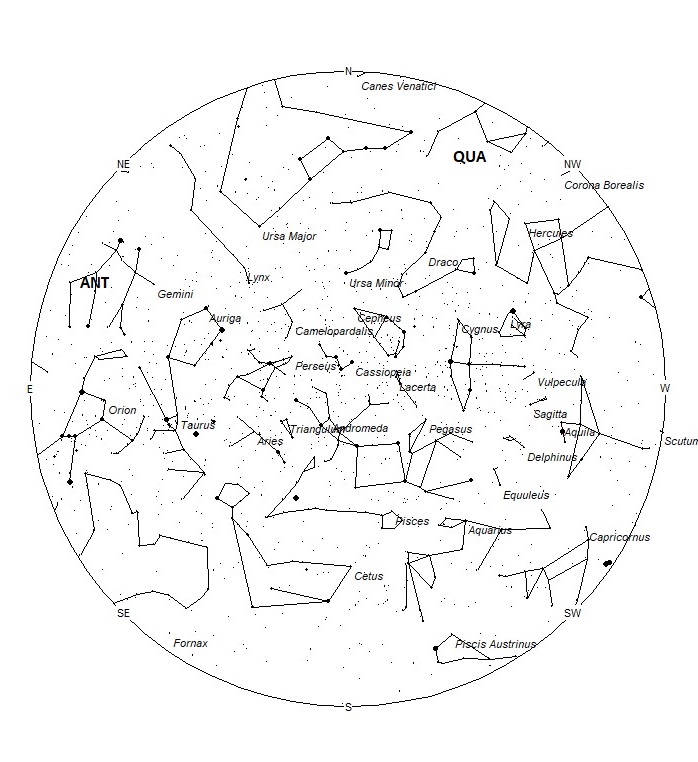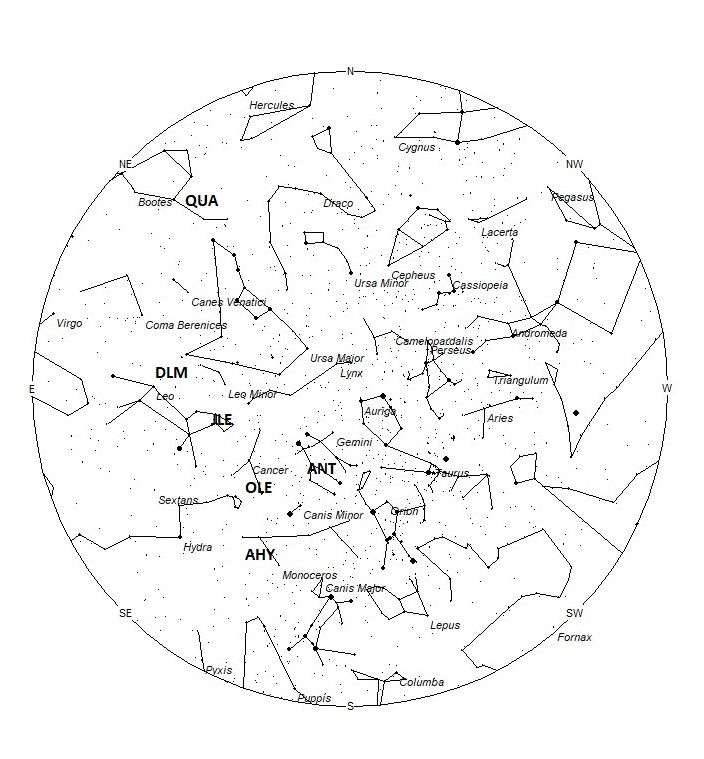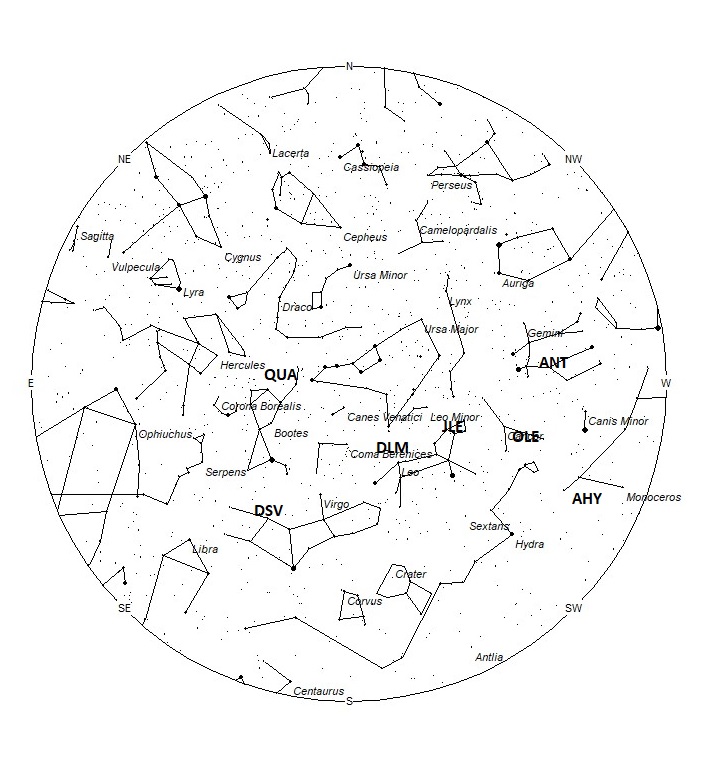During this period, the moon reaches its full phase on Wednesday December 30th. At this time, the moon is located opposite the sun in the sky and will lie above the horizon all night long. This weekend the waxing gibbous moon will set during the morning hours and will leave a small period of time to view under dark conditions between moon set and dawn. The estimated total hourly meteor rates for evening observers this week is near 2 as seen from mid-northern latitudes and 2 as seen from tropical southern locations (25S). For morning observers, the estimated total hourly rates should be near 7 as seen from mid-northern latitudes (45N) and 5 as seen from tropical southern locations (25S). Meteor rates are reduced during this period due to moonlight. The actual rates will also depend on factors such as personal light and motion perception, local weather conditions, alertness, and experience in watching meteor activity. Note that the hourly rates listed below are estimates as viewed from dark sky sites away from urban light sources. Observers viewing from urban areas will see less activity as only the brighter meteors will be visible from such locations.
The radiant (the area of the sky where meteors appear to shoot from) positions and rates listed below are exact for Saturday night/Sunday morning December 26/27. These positions do not change greatly day to day so the listed coordinates may be used during this entire period. Most star atlases (available at science stores and planetariums) will provide maps with grid lines of the celestial coordinates so that you may find out exactly where these positions are located in the sky. A planisphere or computer planetarium program is also useful in showing the sky at any time of night on any date of the year. Activity from each radiant is best seen when it is positioned highest in the sky, either due north or south along the meridian, depending on your latitude. It must be remembered that meteor activity is rarely seen at the radiant position. Rather they shoot outwards from the radiant, so it is best to center your field of view so that the radiant lies at the edge and not the center. Viewing there will allow you to easily trace the path of each meteor back to the radiant (if it is a shower member) or in another direction if it is sporadic. Meteor activity is not seen from radiants that are located far below the horizon. The positions below are listed in a west to east manner in order of right ascension (celestial longitude). The positions listed first are located further west therefore are accessible earlier in the night while those listed further down the list rise later in the night.
These sources of meteoric activity are expected to be active this week.
Details on each source will continue next week when the moon will be less of a factor.
| SHOWER | DATE OF MAXIMUM ACTIVITY | CELESTIAL POSITION | ENTRY VELOCITY | CULMINATION | HOURLY RATE | CLASS |
| RA (RA in Deg.) DEC | Km/Sec | Local Standard Time | North-South | |||
| Anthelion (ANT) | – | 07:12 (108) +22 | 30 | 01:00 | 1 – <1 | II |
| alpha Hydrids (AHY) | Jan 05 | 08:08 (122) -07 | 44 | 02:00 | <1 – <1 | IV |
| Omicron Leonids (OLE) | Jan 09 | 08:22 (125) +11 | 39 | 02:00 | <1 – <1 | IV |
| C Velids (CVE) | Dec 28 | 09:14 (138) -54 | 39 | 03:00 | <1 – 1 | IV |
| January Leonids (JLE) | Jan 02 | 09:34 (144) +26 | 52 | 03:00 | <1 – <1 | IV |
| December Leonis Minorids (DLM) | Dec 17 | 11:14 (168) +27 | 63 | 05:00 | 1 – <1 | II |
| December Sigma Virginids (DSV) | Dec 21 | 14:08 (212) +03 | 66 | 08:00 | <1 – <1 | IV |
| Quadrantids (QUA) | Jan 03 | 14:58 (224) +50 | 41 | 09:00 | <1 – <1 | I |





Hello, Robert!
You haven’t convinced me about the DLM. I have looked carefully at all the meteor streams on all CAMS video networks. There is no such stream DLM among the recorded streams. There is a COM meteor shower. For example, as of December 17, 2020, there are 70 meteor orbits for a COM shower on the CAMS videos, but no DLMs. Why do you mislead the readers of the magazine and give information that has not been verified by anyone. Please remove the DLM stream from your weekly newsletters. Best wishes for the New Year, Ivan
Beginner’s question: what is the CLASS of a shower?
Thx 4 yr answer.
PS In any way connected to Population Index?
Class is just a simple way of expressing the expected strength of each shower at maximum activity.
Class I – Rates are 10 or more per hour
Class II – Rates are 2-10 per hour
Class III – Variable Showers, zero to outburst activity
Class IV – Rates 0 to 1 per hour
It has nothing to do with the population index as that parameter expresses the mean brightness of each shower.